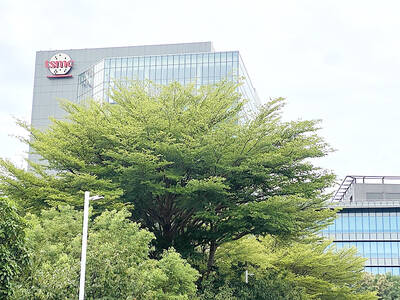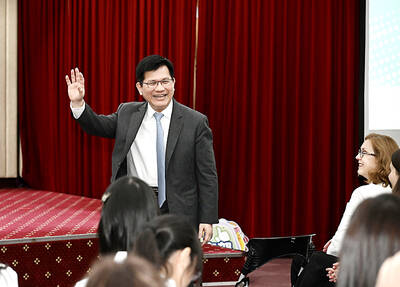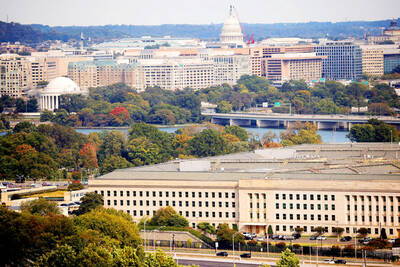Using tablets or smartphones for two to three hours per day increases the risk of retinopathy, while people with diabetes are five times more susceptible than people without diabetes, researchers said.
Hung Chi-ting (洪啟庭), an ophthalmologist at Fooyin University Hospital in Donggang Township (東港), Pingtung County, and Masaru Takeuchi, an ophthalmologist at National Defense Medical College in Tokorozawa City, Japan, launched the research project three years ago.
One hundred participants from Taiwan and Japan were selected for the study. Their average age was 40 and the majority of them were office workers, the researchers said.
The participants were selected because they spent long hours on computers at work and had two to three hours of screen time after work, while 50 of them had been diagnosed with diabetes, the researchers said.
The study showed that changes in the fundus — the interior surface of the eye opposite the lens — were discovered in all the diabetic participants, including increases in the number and size of petechiae and cotton wool spots on the retina, Hung said, adding that 80 percent of the diabetic participants said their vision had deteriorated and they had increased eye floaters.
About 20 percent of the participants without diabeties had increased petechiae and cotton wool spots, and 80 percent reported eye floaters, Hung said, adding that all of the participants reported dry eyes.
When people, especially those with diabetes, use a tablet or smartphone with a screen luminance of 500 lux for at least eight hours per day for three years, they are at greater risk of increased retinal blood vessels, expanded petechiae, vitreous hemorrhage, retinal detachment, neovascular glaucoma or vision loss, he said.
Cytology studies suggest that even if the luminance was 250 lux, the retina still generates new blood vessels that are fragile, he said.
People should cut down on screen time and use yellow-tinted, blue-light filters to protect the eyes, Hung said.
People with diabetes have even higher risk of retinal damage from exposure to blue light, so they should adjust luminance levels and use blue light filters, he said.

FIREPOWER: On top of the torpedoes, the military would procure Kestrel II anti-tank weapons systems to replace aging license-produced M72 LAW launchers Taiwan is to receive US-made Mark 48 torpedoes and training simulators over the next three years, following delays that hampered the navy’s operational readiness, the Ministry of National Defense’s latest budget proposal showed. The navy next year would acquire four training simulator systems for the torpedoes and take receipt of 14 torpedoes in 2027 and 10 torpedoes in 2028, the ministry said in its budget for the next fiscal year. The torpedoes would almost certainly be utilized in the navy’s two upgraded Chien Lung-class submarines and the indigenously developed Hai Kun, should the attack sub successfully reach operational status. US President Donald Trump

Taiwan Semiconductor Manufacturing Co (TSMC, 台積電) is expected to start construction of its 1.4-nanometer chip manufacturing facilities at the Central Taiwan Science Park (CTSP, 中部科學園區) as early as October, the Chinese-language Liberty Times (the Taipei Times’ sister newspaper) reported yesterday, citing the park administration. TSMC acquired land for the second phase of the park’s expansion in Taichung in June. Large cement, construction and facility engineering companies in central Taiwan have reportedly been receiving bids for TSMC-related projects, the report said. Supply-chain firms estimated that the business opportunities for engineering, equipment and materials supply, and back-end packaging and testing could reach as high as

ALL QUIET: The Philippine foreign secretary told senators she would not respond to questions about whether Lin Chia-lung was in the country The Ministry of Foreign Affairs on Wednesday confirmed that a business delegation is visiting the Philippines, but declined to say whether Minister of Foreign Affairs Lin Chia-lung (林佳龍) is part of the group, as Philippine lawmakers raised questions over Lin’s reported visit. The group is being led by Deputy Minister of Agriculture Huang Chao-chin (黃昭欽), Chinese International Economic Cooperation Association (CIECA) chairman Joseph Lyu (呂桔誠) and US-Taiwan Business Council (USTBC) vice president Lotta Danielsson, the ministry said in a statement. However, sources speaking on condition of anonymity said that Lin is leading the delegation of 70 people. Filinvest New Clark City Innovation Park

DEFENSIVE EDGE: The liaison officer would work with Taiwan on drones and military applications for other civilian-developed technologies, a source said A Pentagon unit tasked with facilitating the US military’s adoption of new technology is soon to deploy officials to dozens of friendly nations, including Taiwan, the Financial Times reported yesterday. The US Department of Defense’s Defense Innovation Unit (DIU) is to send a representative to collaborate with Taiwan on drones and military applications from the semiconductor industry by the end of the year, the British daily reported, citing three sources familiar with the matter. “Drones will certainly be a focus, but they will also be looking at connecting to the broader civilian and dual-use ecosystem, including the tech sector,” one source was